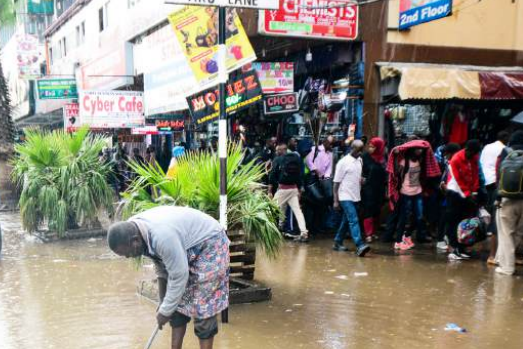Heavy-duty construction trucks, including concrete mixers and dump trucks, have become a constant feature in Nairobi’s traffic.
Engineers say their frequent movement, combined with weak drainage systems, contributes to the recurring damage to sewer lines and road surfaces in the city.
With the onset of the short rains, flooding has resumed on several city roads, accompanied by bursting sewer lines.
Several areas, including Ojijo Road and Jakaya Kikwete Road near the EACC headquarters, have reported fresh sewer bursts.
The one on Ojijo Road has been a recurring problem, often reappearing after repairs or during rainy seasons.
Civil engineer Joash Nyaga said a combination of poor workmanship and the heavy machinery that frequently uses city roads may be behind the recurring damage.
“Most contractors do not prioritise quality or durability. The lack of proper supervision contributes to these frequent breakdowns,” he said.
Another engineer, Yusuf Njoroge, said the rising number of heavy trucks in city traffic affects the durability of public infrastructure since many roads were not designed to handle such loads regularly.
“More trucks on the roads indicate growth in the construction sector, which has short-term economic benefits,” he said. “However, it also leads to faster deterioration of roads and sewer lines, resulting in higher maintenance costs for the public.”
City Hall has acknowledged the recent flooding, with Environment Chief Officer Geoffrey Mosiria attributing much of it to blocked drainage systems.
“The rains have started, and Nairobi is now experiencing heavy rainfall. Unfortunately, some areas are facing flooding, largely caused by blocked drains,” he said.
“Many residents dispose of waste into drainage channels, while in other cases, illegal construction has taken place on top of drainage lines.”
Mosiria said the county is working with relevant agencies to clear blocked drains and urged residents to support the efforts through proper waste disposal and by reporting illegal constructions.
“We are collaborating with Kura and KeNHA to keep major roads passable,” he said.
“I urge all residents to avoid dumping waste into drainage systems and to exercise caution near flooded areas.”
Some residents, however, have criticised the county’s handling of drainage maintenance, saying enforcement of environmental by-laws remains weak.
Governor Johnson Sakaja has previously said Nairobi’s persistent flooding, even after short rains, is largely due to inadequate drainage capacity to handle increased volumes of stormwater.
The county’s 2024–25 budget included several drainage-related projects, such as the Nairobi Rivers Basin Restoration Programme, allocated Sh2.6 million in 2024.
The Nairobi Water and Sanitation Project–Athi received Sh4.03 billion, while the Nairobi Satellite Towns Water and Sanitation Programme was allocated Sh200 million.
Meanwhile, the Kenya Meteorological Department has warned that the ongoing rains are expected to intensify in both amount and spread.
“The ongoing rains over several parts of the country are expected to increase in intensity from today through Sunday,” the department said on Friday.
“Rainfall is likely across parts of the Central Highlands, including Nairobi, the Lake Victoria Basin, the Rift Valley, Western and Northwestern regions.”
The agency forecast isolated heavy showers, ranging from 20 to 50 millimetres within 24 hours, with some areas possibly exceeding that.
“These rains may lead to localised flooding, slippery roads and disruptions, so the public should stay alert and plan their activities carefully,” it said.
The department cautioned that heavy rains could disrupt daily activities, especially in urban centres with limited drainage infrastructure.
by GORDON OSEN


